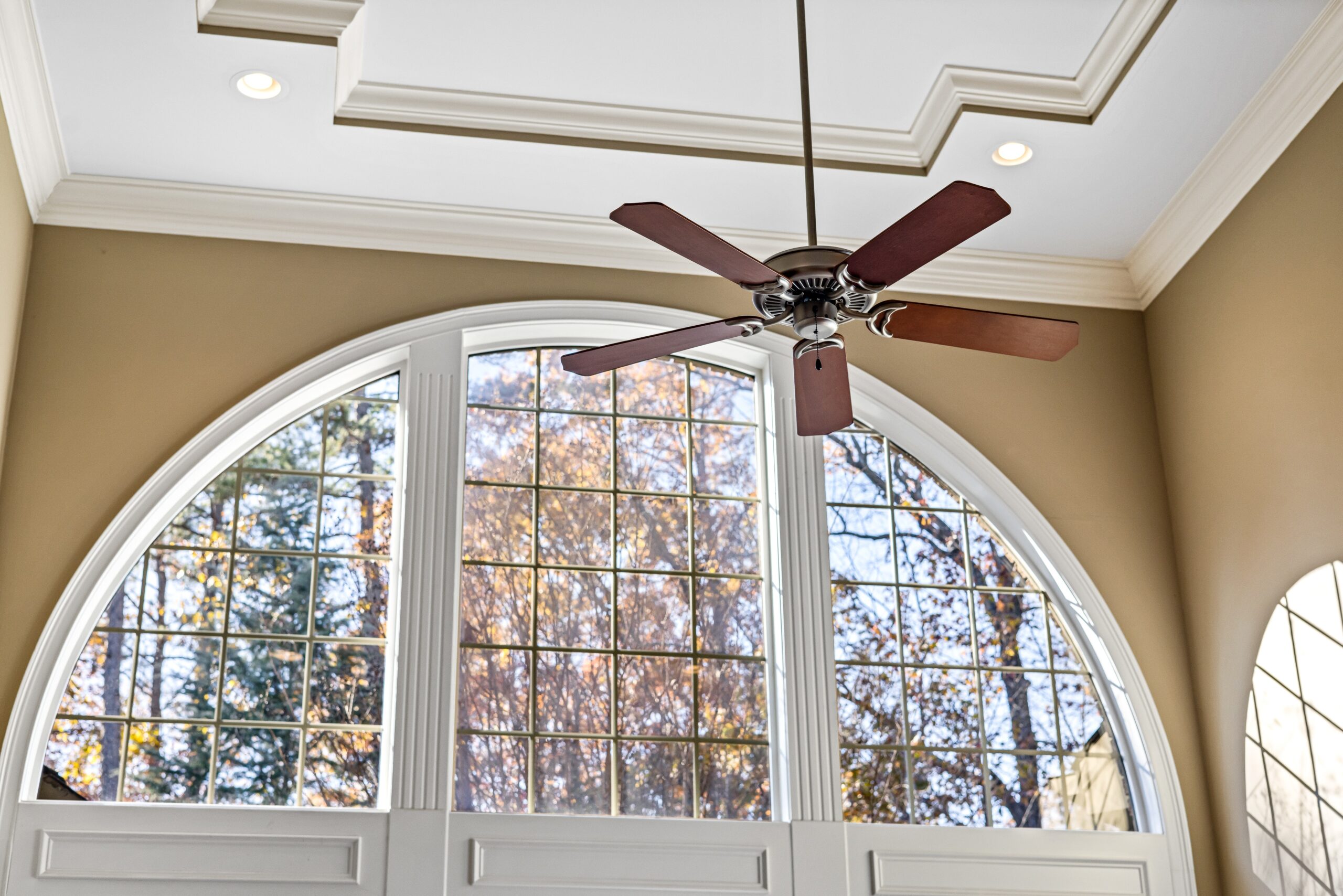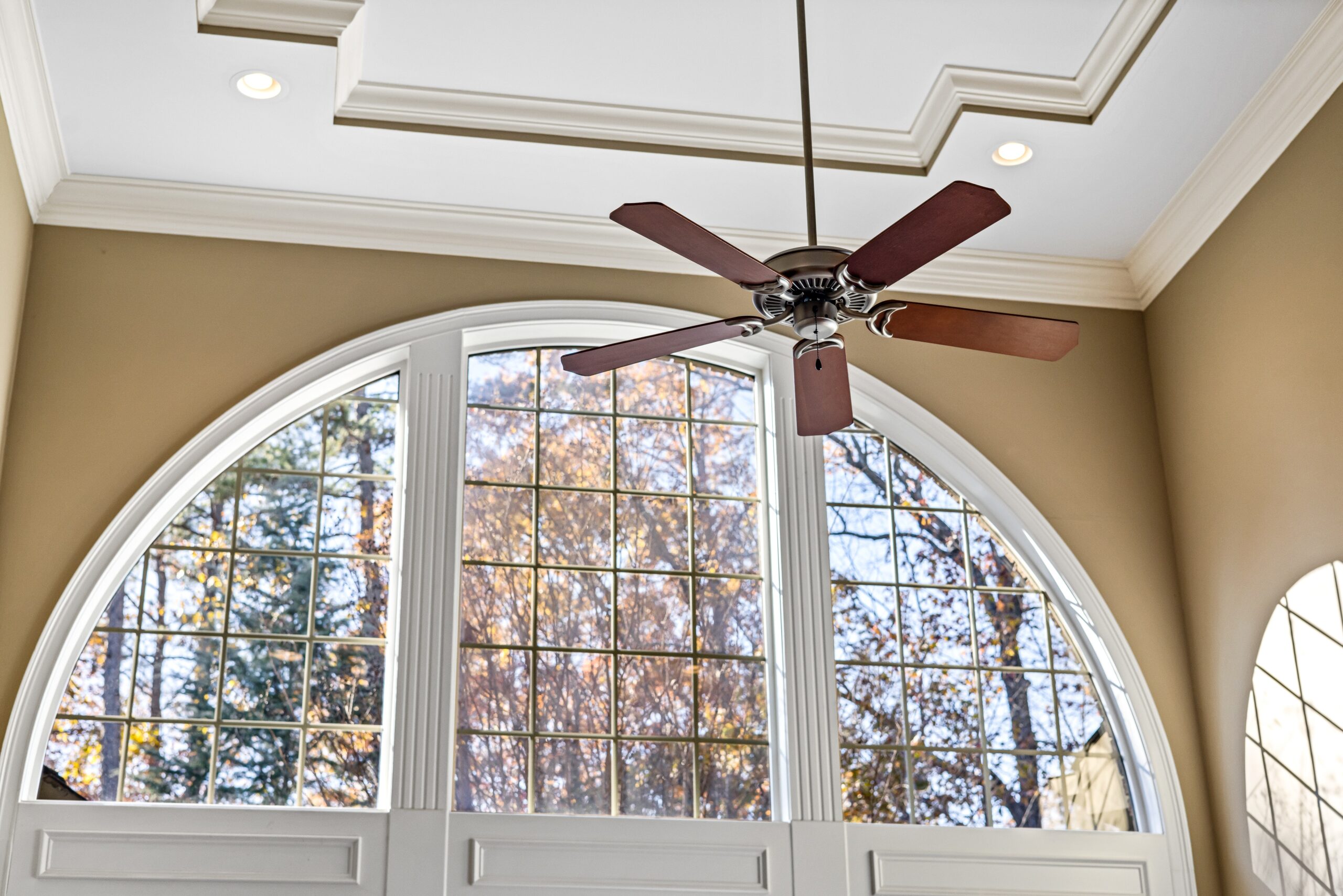Ceiling Fan Downrod Sizing Guide
Are you looking to install a new ceiling fan in your home but need help knowing where to begin? If so, read our Ceiling Fan Downrod Sizing Guide. Installing a ceiling fan is more than just connecting wires and hooking it up – it’s also about determining the right size downrod for your space. When done correctly, choosing the right size downrod for your ceiling fan can ensure optimal fan performance and provide a great aesthetic look. This guide will discuss why the sizing is important when selecting a downrod and how to measure it for accuracy and best results.

Ceiling Fan Downrod Sizing Guide
What Is A Downrod?
A downrod is a crucial ceiling fan component that is often overlooked. The metal rod connects the fan motor to the mounting bracket. Downrods come in various lengths, accommodating different ceiling heights. They can be made of metal or wood and are available in various finishes to match your ceiling fan. Choosing the right length of downrod for your ceiling is essential to ensure proper airflow and maximum comfort. Installing the correct downrod will also help to prevent the fan from wobbling or vibrating. Not only does it make your ceiling fan look better, but it also helps it function better. So the next time you switch on your ceiling fan, thank your trusty downrod for helping you stay comfortable.

What Is A Downrod
What is the best Ceiling Fan Height?
Ceiling fans are:
- An essential addition to any household.
- Providing a combination of air circulation.
- Energy efficiency.
- Aesthetic appeal.

What is the best Ceiling Fan Height
When selecting the best ceiling fan height, a few important factors must be considered. Firstly, ensure the fan blades are at least 7 feet above the ground to prevent accidents. Secondly, please take into account the height of the ceiling itself. A flush mount fan is best for a low ceiling, while higher ceilings require a downrod to ensure the fan is at the proper height. Ultimately, the best ceiling fan height will depend on your room’s specific needs and dimensions. By installing your ceiling fan correctly and with great care, you will achieve a stunning look and enjoy the benefits of staying cool and comfortable throughout the year.
Ceiling Fan Downrod Sizes
Ceiling fans are a great way to circulate cool air throughout your home, but did you know that the downrod size can make a big difference? The downrod is a fan component that links the motor housing to the mounting hardware. It also dictates the distance between the fan and the ceiling. Choosing the right downrod size is crucial for your fan’s aesthetic and functionality. Too long, and the fan will look oddly proportioned in your room; too short, you risk not feeling the full benefits of your fan’s circulation. Take the time to measure the distance between your ceiling and the floor, and determine the best downrod size for your space. Trust us – it’s worth it for the perfect summer breeze!
Calculate Downrod Length
Choosing the right downrod length is crucial for proper performance and aesthetic appeal when installing a ceiling fan. But how do you calculate the appropriate length for your desired look? It’s quite simple – measure the distance from your ceiling to the floor and subtract the height of your ceiling fan. This will give you the minimum recommended downrod length for your fan. However, if you have high ceilings or prefer a longer downrod for a dramatic effect, you can add additional length to your calculation. Ultimately, finding the right downrod length is all about creating a comfortable and stylish environment in your home.
Are Ceiling Fan Downrods Universal?
When the heat is on during those sweltering summer days, nothing beats a ceiling fan to keep you cool and comfortable in your home. But what happens when you have high ceilings? That’s where the ceiling fan down rods come into play. However, many people wonder if they are universal. Well, the short answer is no. Various sizes and types of downrods are compatible with other ceiling fans. It’s important to ensure that you use the correct downrod for your specific ceiling fan to ensure safety and effectiveness. So, before you modify your ceiling fan, ensure you know the exact measurements and specifications needed for your downrod to avoid any mishaps or inconveniences.
Downrod Diameter
The size of the downrod diameter plays a crucial role in the functionality and effectiveness of your ceiling fan. A downrod diameter that is too small can cause your fan to wobble and vibrate excessively, while a too-large diameter may lead to a lack of airflow and improper ventilation. Selecting the right downrod diameter for your fan based on the ceiling height and the room size is important. Consider your space’s airflow and circulation needs and choose the appropriate diameter to ensure maximum comfort and efficiency. A ceiling fan can be a valuable addition to any home by selecting the appropriate diameter, offering refreshing breezes and fresh air for many years.
Threaded Vs. Non-Threaded
When choosing between a threaded and non-threaded approach, there are a few things to consider. Threaded code allows multiple tasks to be completed simultaneously, while non-threaded code runs on a single thread and completes each task in order. The benefit of threaded code is that it generally runs faster and can handle more complex operations. Non-threaded code tends to be more straightforward. When deciding whether to use threaded or non-threaded code, it all boils down to the unique requirements of your project. Are you looking for speed and complexity or simplicity and ease of use? Whatever your choice, both approaches have unique advantages and can lead to successful project outcomes.
Color & Finish
The color and finish of a product can significantly impact its design. Something ordinary can instantly become eye-catching and memorable with the right shade and texture. The color can convey a message or emotion, while the finish can provide a certain level of sophistication or rustic charm. Choosing the right color and finish for a project can be exciting and challenging, whether a sleek metallic sheen or a matte, natural look. With so many possibilities, it’s important to consider the purpose and audience of the product before making a final decision.
Can You Add A Downrod To Any Ceiling Fan?
Ceiling fans are a popular choice for home cooling, and adding a downrod can improve their performance. While many homeowners wonder if installing a downrod on any ceiling fan is possible, the answer can be complicated. Some ceiling fans are designed to work with specific downrod sizes and shapes, while others have a fixed mounting height. Therefore, it is essential to check the manufacturer’s instructions to determine if a downrod can be added to your ceiling fan. A downrod can increase the distance between the blades and the ceiling, creating better airflow and more efficient cooling. If your ceiling fan is compatible, adding a downrod to enhance its performance is worth considering.
Are Ceiling Fan Downrods Interchangeable?
Ceiling fans are a popular and practical way to keep our homes cool and comfortable. And while they come in all sorts of shapes and sizes, one part of a ceiling fan often gets overlooked- the downrod. But what exactly is a downrod, and are they interchangeable? Well, a downrod is a long, cylindrical piece that connects the fan motor to the mounting bracket on your ceiling. And the good news is that many downrods are indeed interchangeable, allowing you to customize the length of your fan to fit your particular ceiling height. However, it’s important to note that not all downrods are universal, so check compatibility before purchasing. But with the right downrod, you can ensure that your ceiling fan is stylish and functional and the perfect fit for your home’s unique layout.
In conclusion, selecting the appropriate ceiling fan downrod is essential for safety and aesthetic appeal. When searching for a downrod, check the length, diameter, mounting style, color & finish, and compatibility with your particular ceiling fan. While all of this information can seem overwhelming at first, this guide is designed to simplify the process and allows you to choose the right size for your space confidently. When in doubt, please consult an experienced electrician who can assess the situation in person. Remember that a downrod is an important component of any ceiling fan installation that should be noticed!